
Ultravioletto's Neural Mirror shows audiences an AI reflection of themselves
Visitors to a former church in the Italian city of Spoleto will encounter a mirror that uses artificial intelligence and facial recognition to build an otherworldly image of themselves.
Italian design studio Ultravioletto created the Neural Mirror installation to give audiences a chance to contemplate the controversial technologies in an artistic setting.
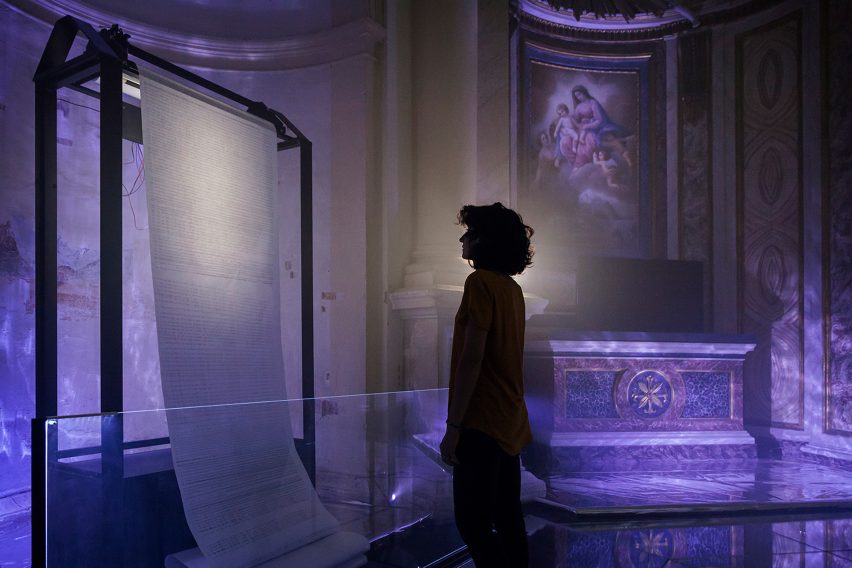
The ghostly, rainbow-coloured reflections viewers see of themselves are actually clouds of points generated through artificial intelligence.
But at first glance, audiences experience the installation as a normal mirror, as it contains a mirrored film layered over OLED displays that reflects their image back at them.
It is only after the facial recognition software has scanned and processed their presence — decoding the subject's likely sex, age, race and emotional state — that the viewer sees the AI's interpretation of them on the screen, obscuring the mirror.
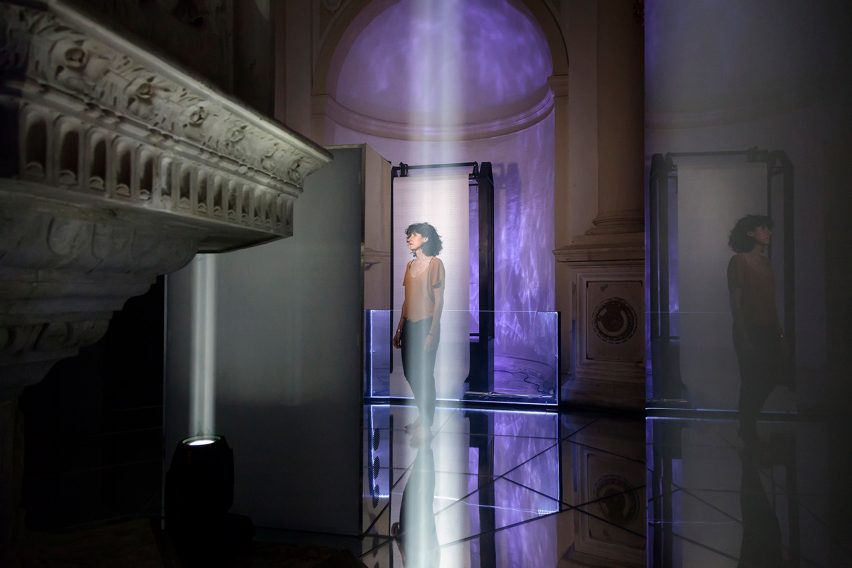
"Artificial intelligence extracts all of our behaviours in a shady way then transforms them into a form of wealth for corporations," Ultravioletto's art director Bruno Capezzuoli told Dezeen.
"Here this process is well declared and explained to the user. They can see in real time what kind of data we are capturing."
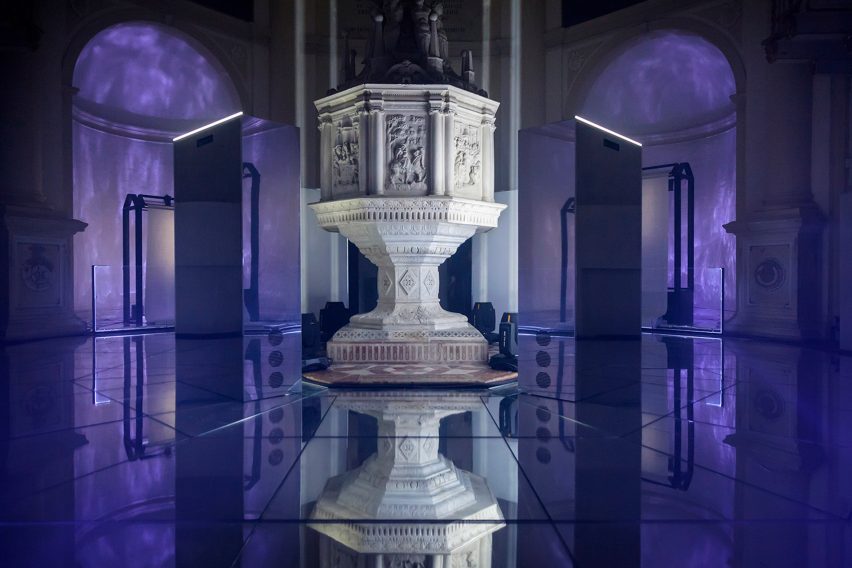
The viewer is left to draw their own meaning from the display, which as well as the mirror includes a machine that prints the collected information as strings of code onto a giant roll of paper.
"For us it remains as bare knowledge, not refined, the beauty of data as data, with no interpretation," continued Capezzuoli.
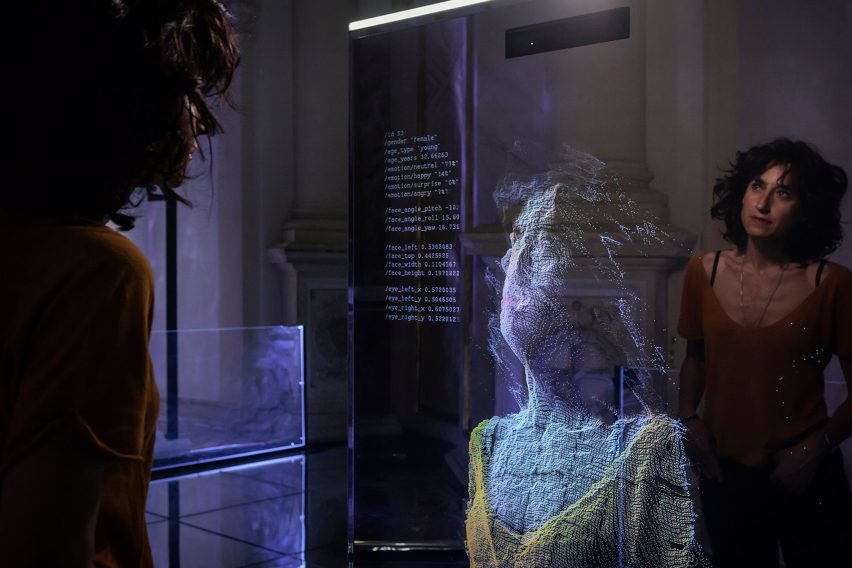
Presented with the Carla Fendi Foundation, the Neural Mirror is installed at the former Church of Santa Maria della Manna d'Oro as part of the Spoleto Festival of Two Worlds, that takes place in the Umbrian town until 14 July.
The three-dimensional Neural Mirror portrait has shades of the psychedelic imagery created by Google's famous artificial neural network.
Like those images, its idiosyncrasies are the product of the AI, which Ultravioletto wanted to use as a co-creator rather than a mere tool. The program decides in what shapes and colours to compose the image, based on the captured data.
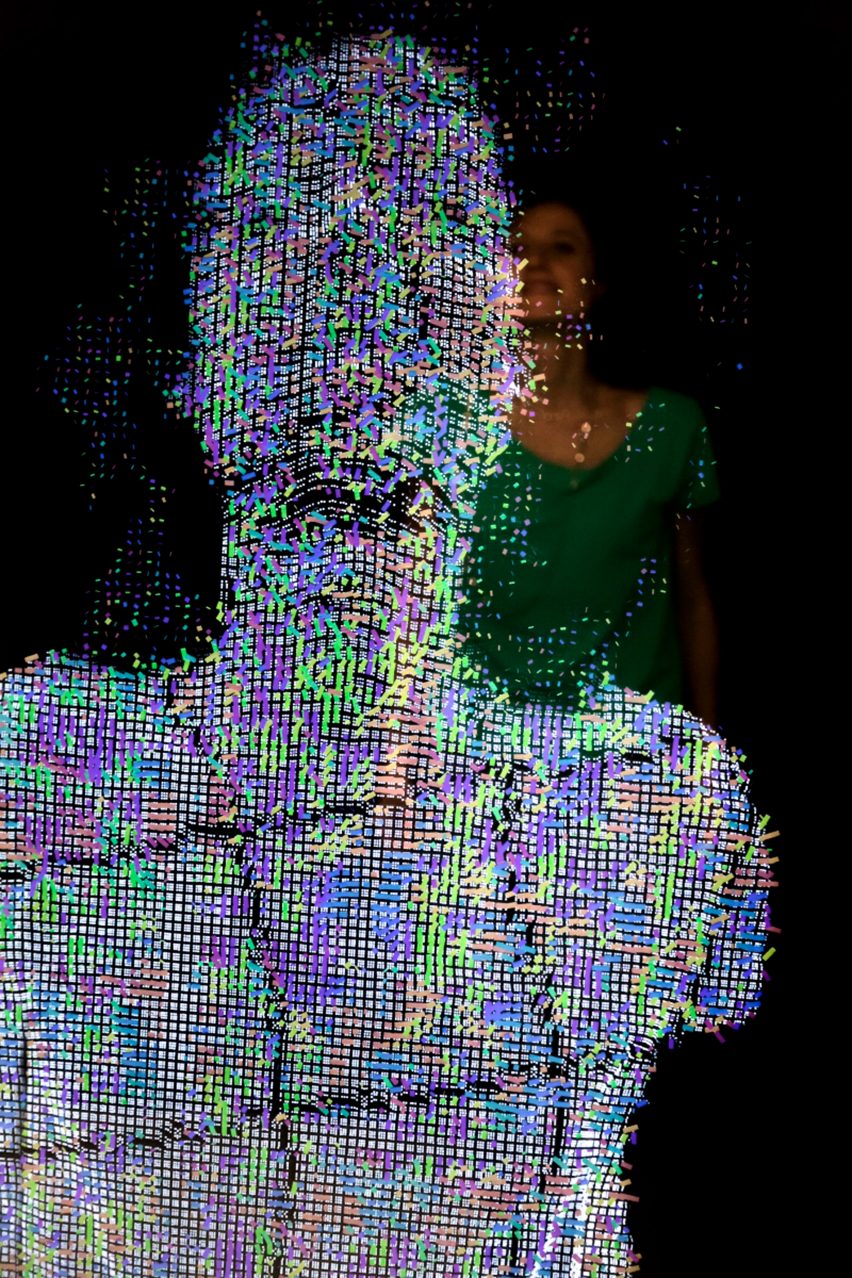
It uses a mixture of in-house facial-recognition software and graphics, as well as third-party programs from the advertising and marketing industries for some of the more advanced computational analysis.
"The amazing thing is that these technologies are available for everybody," said Capezzuoli.
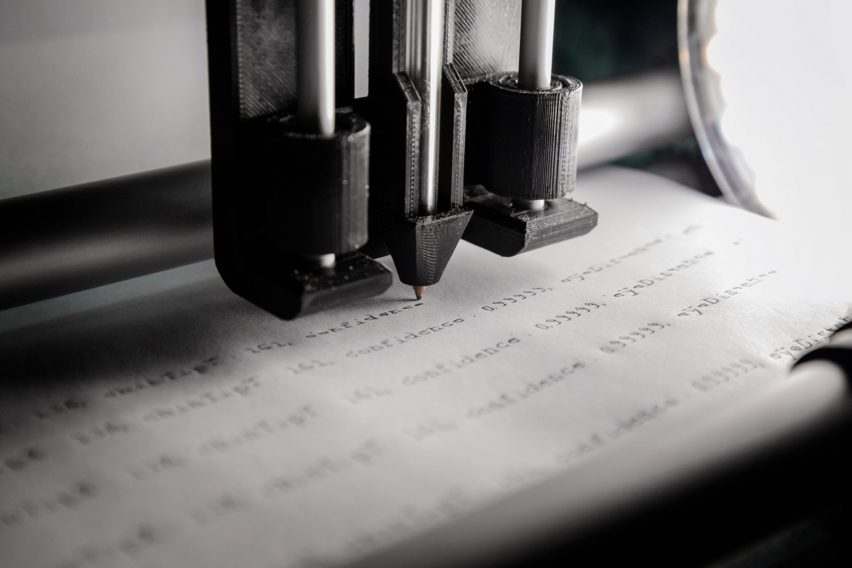
Next to the screens, a machine writes out the data it has gathered as it sees it with a pen onto massive rolls of paper. It presents the data as strings of JSON code — a simple data-interchange language based on JavaScript.
"In conclusion the whole experience should be analysed as a data stream that flows between me and my analogue reflection," said Capezzuoli. He described the 3D image as a "brief digital benevolent alter ego" that returns to the viewer as "a river of printed paper".
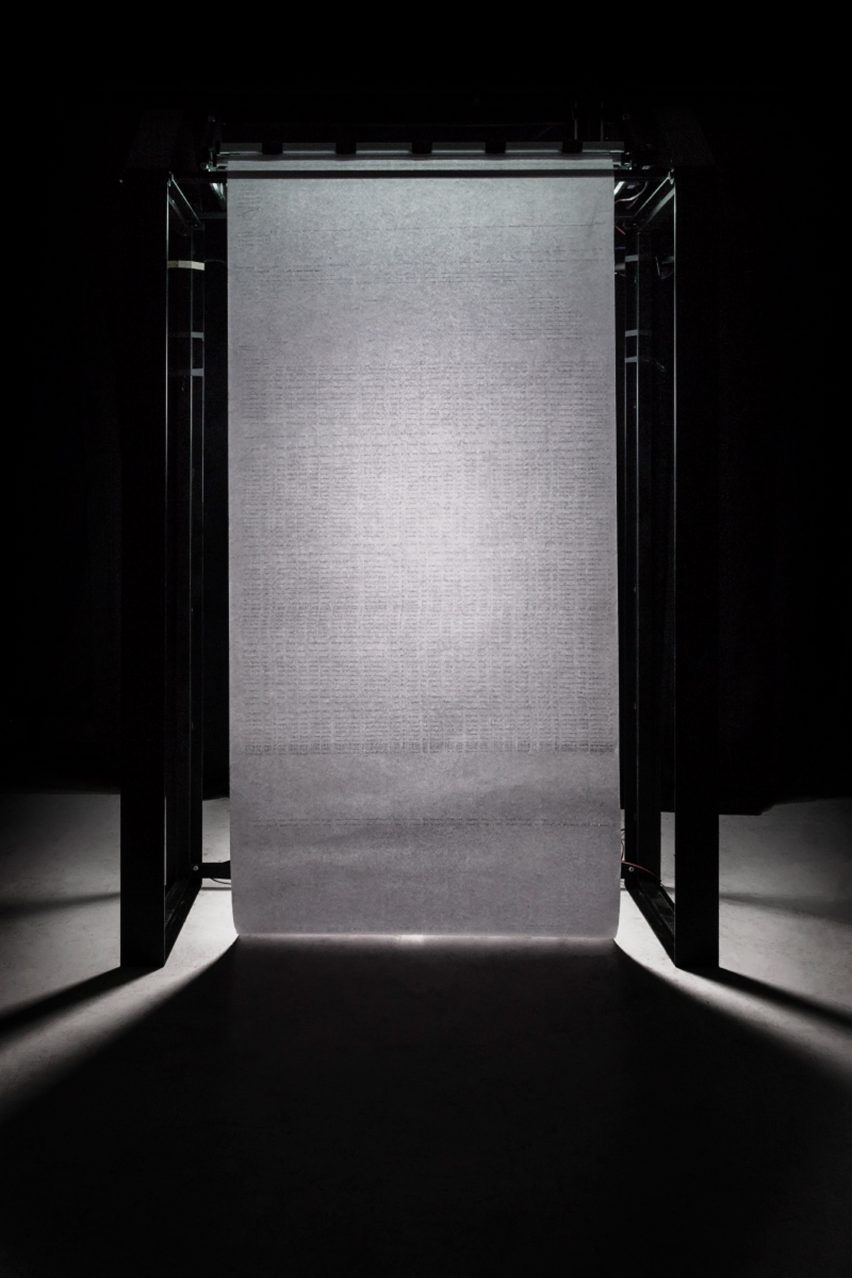
Rome-based studio Ultravioletto works at the intersection of design and technology, producing installations such as robot dancers in 5 Sonic Arms and code art in Tribute to Creators.
Neural Mirror is on display at the former Church of Santa Maria della Manna d'Oro, overlooking the central Piazza del Duomo in Spoleto, until 14 July 2019.